Audio Article
Let’s be honest: when you hear the words “cultural repatriation,” your eyes might glaze over. It sounds academic, dry, and frankly, like someone else’s problem. Or, just as likely, you picture an argument. You picture headlines about the Benin Bronzes, the Elgin Marbles, or the Rosetta Stone. You picture two sides dug in for a fight: one yelling “Thieves!” and the other muttering “Finders keepers, and besides, we kept it safe.”
This debate is loud, it’s acrimonious, and it’s almost entirely stuck. It’s a circular argument about the past, a legal and moral tangle focused on possession, ownership, and blame.
But what if that’s the wrong conversation entirely?
What if the return of an artifact isn’t the end of a dispute, but the beginning of a relationship? What if this whole, messy process isn’t about closing a dark chapter, but about opening a new, more honest, and infinitely more interesting one?
The real story of cultural repatriation isn’t about “stolen art.” It’s about the future. It’s about healing, mutual respect, and forging new kinds of global partnerships that were impossible just a generation ago. It’s not about what was taken; it’s about what we can, and must, build together now.
Why “Stolen Art” Is the Wrong Conversation
We get stuck on the “stolen” part because it’s simple, it’s dramatic, and it fits neatly into a hero-and-villain narrative. But that framework is a trap. It keeps us focused on the transaction itself, rather than the profound, ongoing consequences of the object’s absence.
It’s a Legal and Moral Dead End
The “stolen” debate inevitably bogs down in history and semantics. What’s the statute of limitations on a bronze head acquired during a “punitive expedition” in 1897? How do you define “possession” when an item was “gifted” by a colonial administrator who didn’t have the authority to gift it?
These are not easy questions, and the legal battles can (and do) last for decades. This acrimonious fight centers on proving wrongdoing. But the future-focused approach doesn’t require a legal admission of guilt. It requires only the recognition of a simple fact: that this object has a home, and it isn’t here. Focusing on “stolen” means one side must “win” and the other must “lose.” Focusing on the future allows for a new dynamic where both sides can gain something far more valuable than a mere object.
It Focuses on Possession, Not People
When we argue about “who owns it,” we’re treating priceless, spiritually significant artifacts like baseball cards. It becomes a discussion about which billionaire, or which national museum, gets to keep the shiny object in their display case.
This misses the point entirely. These objects are not just property. For the communities they came from, they are often living, breathing parts of their cultural identity. They can be legal documents, spiritual conduits, or historical records. The Benin Bronzes, for example, were not just decorations; they were a crucial part of the kingdom’s royal history, an archive cast in metal.
Their absence isn’t a property dispute. It’s a wound. It’s a missing piece of a cultural puzzle, and arguing about who holds the title is like arguing about who owns the empty space.
It Keeps Us Stuck in the Past
The blame game is, by definition, backward-looking. It forces institutions into a defensive crouch, making them cling to 19th-century justifications about “stewardship” and “universal access.” It forces source communities to re-litigate the trauma of colonialism over and over again, proving their loss is valid.
Nobody moves. Nothing changes.
The new conversation, the one that matters, simply acknowledges the past as a fact, not a weapon. It says: “Okay, this happened. We are where we are. What does a healthy, respectful relationship look like starting tomorrow?”
The Artifact as an Active Participant in Culture
To understand why repatriation is about the future, we have to stop seeing these objects as static, dead things. They are not just pretty rocks or well-made sculptures. In their home contexts, they are active. They do things.
More Than Just a Pretty Object
A mask in a glass box in Berlin or London is a piece of ethnographic art. It is admired for its form, its materials, its “primitive” beauty.
That same mask in its village of origin is not art in the Western sense. It’s a participant in a ceremony. It’s a tool for connecting with the divine. It’s a character in a story, an educator for the young, a vessel for communal memory. When it’s in the glass box, it is silent. When it’s home, it speaks.
Repatriation isn’t just moving an object. It’s letting it get back to work. It’s allowing it to resume its role in the life of its community.
The Trauma of the Empty Space
We talk a lot about the objects that are in museums. We talk less about the “negative space” they left behind. When foundational items of a culture are removed, it’s not just a loss of heritage; it’s an act of cultural trauma.
It’s like trying to tell your family’s story, but the main photo album, the one with your grandparents’ wedding and your childhood, is gone. You can still tell the story, but the heart of it is missing. You are disconnected from your own proof.
This trauma is real, and it compounds over generations. It creates a disconnect, a sense that your own history is something you have to visit in a foreign country, behind glass, with a label written by someone else.
When the Gods Go Home
This is where the future begins. When these objects are returned, it’s not a funeral for the museum that lost them. It’s a homecoming.
In 2021, the University of Aberdeen returned a Benin Bronze head to Nigeria. Oba Ewuare II, the King of Benin, called the object a “living” part of his people, not a piece of art. Its return was a moment of profound spiritual and communal significance.
This act doesn’t “fix” the past. You can’t undo the violence of 1897. But it does heal the present. It stitches that “empty space” back together. It tells a new generation that their culture is not a relic for others to study, but a living, breathing thing that belongs to them. This is the foundation you build a new future on.
Building the New Future: What Happens After the Return
This is the most exciting part, and the one we almost never talk about. Repatriation is not an end. It is a beginning. It is the necessary, non-negotiable first step to building relationships based on something other than a colonial power dynamic.
Step One: Healing and Recontextualization
For the source community, the return is a catalyst for cultural revitalization. It’s a chance to recontextualize—to take an object that has been defined by a foreign museum for a century and reintroduce it on its own terms. It sparks new research by local scholars, new ceremonies, new art, and a new sense of pride.
For the returning institution, it’s a different kind of healing. It’s a liberation from a defensive, ethically compromised position. It’s an admission that the museum’s role is changing, from a fortress of “universal” knowledge to something more dynamic and honest.
Step Two: Redefining the Museum
The “universal museum”—the idea that a few massive institutions in the West should hold the world’s treasures for all mankind—is a 19th-century idea. And it’s dying.
It’s being replaced by a 21st-century model: the museum as a network, a collaborator, a partner.
When a German museum coalition agreed to a large-scale return of Benin Bronzes, they didn’t just ship them off and say “good luck.” They entered into a massive, multi-year partnership with their Nigerian counterparts. This includes funding for a new museum in Benin City, joint archaeological work, and shared conservation training.
The German museum “loses” a collection, but it gains a deep, active, and equitable partnership with the very heart of the culture it seeks to study. It stops being a mere holder of things and starts being a participant in culture.
Step Three: Forging Equitable Partnerships
This is the new currency. The old model was: “We have the objects, so you must come to us.” The new model is: “We have mutual respect, so let’s work together.”
These partnerships create a flow of knowledge that is, for the first time, a two-way street. Western curators learn from Nigerian scholars about the living meaning of the Bronzes. Nigerian conservators get access to new technologies and training. Exhibitions are co-curated. Digital models are shared.
This leads to richer, more accurate, and more ethical scholarship for everyone. It’s a “win-win” that is impossible to achieve when one party is holding all the cards (and all the artifacts).
The Global Museum 2.0
So, what does this new future look like? Does it mean the museums in New York, London, and Paris will be empty?
Absolutely not. It just means their role is evolving.
Beyond Digital Replicas
For years, the lazy answer was “We’ll just give them a 3D scan.” This was, to put it mildly, insulting. It’s offering a picture of the photo album instead of the album itself.
But in this new partnership model, digital technology is a tool for collaboration, not a substitute for return. A high-resolution scan of a returned object can stay in the Western museum, allowing for continued scholarly access. But now, it’s a respectful copy of an object that is where it belongs, not a placeholder for an item that is missing.
The Power of the Long-Term Loan
Here is a radical idea: museums can share.
Once the question of ownership is settled and an object is returned, it creates a new, healthy foundation. From that foundation, the source community—now as the rightful owner—can choose to loan items back to their former holders.
Imagine a world where the British Museum doesn’t “possess” the Parthenon Marbles, but instead, hosts a rotating exhibit in partnership with the Acropolis Museum in Athens. The object’s “home” is undisputed, but its ability to travel as a cultural ambassador is enhanced. This is already happening. Nations that have received repatriated items are now organizing global tours for those very objects, secure in the knowledge that they are theirs to share.
From “Universal Museum” to “Global Network”
The future is not a few giant “universal museums.” The future is a “global network” of museums, all on equal footing.
In this model, the museum in Benin City is just as important as the museum in Berlin. The museum in Cairo is a partner, not a “source,” for the museum in Paris. Knowledge, expertise, and, yes, objects can flow between them. This is a more decentralized, more democratic, and far more accurate way to understand our shared global history.
This is not a utopian dream. It is happening right now. It is messy, it is difficult, but it is happening.
It requires letting go of old, comfortable, and divisive narratives. It demands that we stop arguing about “who stole what” and start asking “what can we build together?”
Repatriation isn’t an act of self-flagellation or an admission of defeat. It’s not about erasing history. It’s about making history. It’s an investment in a shared future, one built on the radical, healing idea of mutual respect. It’s the only way we can find all the missing pieces and, finally, start to build something whole.
Focus on Language: Vocabulary and Speaking
Alright, let’s break down some of the language we just used. When we’re tackling a topic this complex, the specific words we choose can change the entire conversation. We’ve been moving from a language of blame to a language of collaboration, and that requires some pretty specific and powerful vocabulary. Let’s dig into ten of the most important terms from the article, see what they really mean, and figure out how you can use them, not just when you’re talking about museums, but in your everyday life.
We’ll start with the big one: repatriation. In the article, we’re talking about cultural repatriation, which is the act of returning artifacts to their country or community of origin. The root of the word is from the Latin patria, meaning “fatherland” or “homeland.” So, it’s literally the process of “going home.” It’s a very formal, official word. You wouldn’t say, “I’m repatriating my friend to his house after the party.” But you would see it in the news, like “The government assisted in the repatriation of its citizens stranded abroad.” It implies a formal, often complex, return to a place of origin.
Next up is equitable. We talked about “equitable partnerships.” This word is crucial, and it’s very different from “equal.” “Equal” means everyone gets the same thing. If you have three people of different heights and you give them all an “equal” six-inch box to stand on, the shortest person still can’t see over the fence. “Equitable” means everyone gets what they need to be at the same level. The shortest person gets a twelve-inch box, the middle person gets a six-inch box, and the tallest person gets nothing, because they can already see. In the article, an “equal” partnership might just be a 50/50 split on costs. An “equitable” partnership recognizes that one institution (like a massive Western museum) has far more resources, so it needs to contribute more (like funding the new museum in Benin City) to make the partnership truly fair. You can use this in your life all the time. When you’re splitting a dinner bill, is it “equal” (everyone pays $20) or “equitable” (everyone pays for what they ordered)? When you’re assigning chores at home, an “equitable” division considers who has more time or energy that day. It’s about fairness, not just sameness.
That leads directly to reciprocity. This is a beautiful word. It describes a relationship where there’s a two-way street, a mutual exchange of benefits. The article argues against the old one-way model (we take your artifacts, you get… well, nothing) and pushes for one based on reciprocity. The German museum gets research and partnership; the Nigerian museum gets its artifacts and training. It’s a give-and-take. This is the heart of any healthy relationship. If your friend only calls you to complain but never listens to your problems, there’s no reciprocity. A good friendship, a good marriage, a good work partnership—it’s all built on reciprocity.
Let’s talk about a very “museum” word that has great everyday use: provenance. In the article, provenance refers to the object’s history, its chain of custody. Who owned it? When? How did it move from one hand to the next? For a museum, an object with clear provenance is great. One with shady provenance (like it just “showed up” after a war) is a huge ethical problem. But you can use this for anything. That amazing story your friend told you? You might ask, “What’s the provenance of that rumor?” meaning, “Where did you hear it? And where did they hear it?” It’s the backstory, the origin, the paper trail.
Now for a more negative one: acrimonious. We used it to describe the “acrimonious fight” over stolen art. It means angry, bitter, and full of ill will. It’s a great, strong adjective. Think of a simple “angry” debate as a small fire. An “acrimonious” debate is a full-on chemical fire—toxic, nasty, and hard to put out. It’s most often used to describe divorces. An “acrimonious divorce” isn’t just sad; it’s a war over furniture, custody, and who gets to keep the dog. You can use it anytime an argument gets really, deeply nasty: “The meeting about the budget became acrimonious very quickly.”
Let’s look at intangible. We talked about “intangible cultural heritage.” “Tangible” means something you can touch (like a statue, a tangible object). “Intangible” means something you can’t touch, but that is just as, if not more, real. Think about a culture. The tangible parts are the food, the buildings, the clothes, the artifacts. The intangible parts are the language, the beliefs, the music, the ceremonies, the stories that go with the artifacts. The article argues that when you take the tangible object, you damage the intangible culture it supports. In life, the most important things are often intangible: love, respect, a sense of community, your reputation. “The company’s greatest asset isn’t its building; it’s the intangible sense of trust it has built with its customers.”
Then we have stewards. This is the word museums have historically used to defend themselves. “We are the stewards of world heritage.” A steward is a caretaker, someone who manages or looks after something on behalf of someone else. Think of the steward on an airplane—they don’t own the plane; their job is to keep you safe and comfortable. By calling themselves “stewards,” museums implied they were just “taking care” of these items for all of humanity. It sounds noble, right? But the article challenges this, suggesting you can’t be a good steward of something that doesn’t belong to you, especially if the owner is asking for it back. You can use this in a very positive way: “We need to be good stewards of the environment,” meaning we need to take care of it for future generations.
I love this next one: catalyst. The article says the return of an object is a “catalyst for cultural revitalization.” A catalyst is the “spark.” In chemistry, it’s a substance that causes a chemical reaction to happen faster, without being consumed itself. In life, it’s the event or person that kicks things into high gear. The catalyst for your decision to finally get healthy might have been a bad checkup at the doctor’s. The catalyst for a company’s success might be one new, creative employee. It’s not the whole reaction, but it’s the thing that starts it. “That one speech was the catalyst for the entire movement.”
Near the end, I used holistic. This word is fantastic. It means you’re looking at the whole of something, not just its individual parts. A doctor who practices “holistic medicine” doesn’t just look at your sore throat; they ask about your diet, your stress, your sleep, your lifestyle—because they know all those parts are interconnected. In the article, a holistic approach to repatriation isn’t just about the object; it’s about the law, the ethics, the spiritual impact, the new partnerships, and the future. It’s the big picture. When you’re problem-solving, a “holistic” solution is one that solves the root cause, not just the symptom.
Finally, recontextualize. This is a powerful one. It means to put something into a new context, which changes how you understand it. When a sacred mask is in a museum, it is contextualized as “art.” When it’s returned, its community gets to recontextualize it—to put it back into its original context of “spiritual tool” or “ceremonial participant.” This happens all the time. If you hear a song you loved as a kid, but then you read the lyrics as an adult, you recontextualize it and realize it’s much sadder than you thought. “I had to recontextualize my memory of that day after I learned what was really going on.”
So, there you have it. Ten words that aren’t just for academic articles, but for making your own daily communication more precise and powerful.
Now, let’s move on to Speaking.
Today’s speaking skill is directly related to the theme of our article: the art of the constructive pivot.
We talked about how the “stolen art” debate is stuck in an acrimonious, backward-looking loop. The skill we need—both in diplomacy and in daily life—is how to pivot from a point of conflict to a point of construction, without being dismissive. It’s the “Yes, And…” principle’s cousin. It’s the “Acknowledge, and Shift” model.
Here’s how it works. When you’re in a disagreement, it’s so easy to get stuck on the point of conflict.
Person A: “You always leave the kitchen a mess!” (The blame)
Person B: “I do not! You left that pan out yesterday!” (The counter-blame)
…and you’re stuck.
The constructive pivot changes the game.
Person A: “You always leave the kitchen a mess!”
Person B: “You’re right, I did leave that counter dirty, and I know it’s frustrating. (This is the Acknowledge part. You are not agreeing you always do it, but you are validating their feeling). The real issue is that we’re both exhausted in the evenings. (This is the Shift to the holistic problem). How can we create an equitable system so neither of us feels overwhelmed?” (This is the Pivot to the future solution).
See what happened? You acknowledged the past (the mess) but immediately pivoted the conversation to the future (the system). You took the catalyst (the complaint) and used it to build something.
Let’s try it with our topic.
Conflict-based: “Your museum stole the Benin Bronzes.”
Pivot-based: “Acknowledging the provenance of the Bronzes and the violence of 1897 is absolutely essential. (Acknowledge). And now, the most important question is how we can use that knowledge to build an equitable partnership for the future. (Shift & Pivot). What does a respectful, holistic relationship look like, starting today?”
This technique is your secret weapon in meetings, relationships, and any difficult conversation. It shows you are listening, but it also shows you are more interested in solutions than in blame.
So, here is your Speaking Challenge:
This week, I want you to find one small, acrimonious loop in your life. It could be a recurring, pointless argument with a family member, a friend, or a coworker. It could even be an argument you have with yourself.
Your mission is to not win the argument. Your mission is to pivot it.
Listen for the complaint. Acknowledge the feeling behind it. “I hear that you’re frustrated about…” “I recognize that it’s a problem when…” And then, make the pivot. Ask a “how” or “what” question that moves the focus to the future.
“How can we solve this moving forward?”
“What’s a holistic solution we can both feel good about?”
“What would an equitable plan look like for us?”
It’s not easy, but it’s how you turn a dead-end fight into a starting line. Give it a try.
Grammar and Writing
Let’s dive into the practical side of this. We’ve been talking about diplomacy, partnerships, and building new futures. These things don’t just happen; they are built with very careful, very deliberate language. Letters, proposals, and official statements are where this work gets done.
So, here is your Writing Challenge:
You are the chief curator of a mid-sized, well-respected university museum. Your collection includes a small but significant collection of 12 sacred inua (spirit) carvings from a specific Indigenous community in the Arctic. You have just received a formal, respectful, and powerful request from that community’s cultural council for the full and unconditional repatriation of these carvings.
Your task is to write a 500-word official response to the community’s cultural council.
Here are the rules:
- You must agree to the repatriation. The goal is not to fight it.
- Your response must move beyond a simple “yes.” Do not just say, “Okay, we’ll send them.”
- Your letter must frame this repatriation as the beginning of a new, equitable partnership.
- You must propose at least two specific ideas for this new partnership (e.g., a joint research project, a digital sharing agreement, a visiting fellowship for their scholars, support for their new cultural center, etc.).
- Your tone must be respectful, humble, and forward-looking, not defensive or self-congratulatory.
This is a challenge in diplomacy and constructive writing. You’re turning a moment of “losing” an artifact into a moment of “gaining” a partner.
Now, how do you actually do this? This kind of writing requires some specific grammatical and stylistic tools. Let’s turn this into a lesson.
Lesson: The Grammar of Diplomacy and Proposal Writing
To succeed in this challenge, you need to sound professional, respectful, and constructive. Here are the tools you’ll need.
1. Grammar Tool: The Subjunctive Mood
The subjunctive is the secret weapon of polite, formal, and hypothetical communication. It’s subtle, but it’s what makes a request sound like a proposal, not a demand. We use it to talk about things that are not (yet) real: wishes, proposals, hypotheticals, and formal requests.
You’ll need it for your proposal.
- Instead of: “We will start a new partnership.” (Sounds like a demand.)
- Try: “We propose that our two institutions develop a new partnership.” (The verb “develop” is in the subjunctive. Notice it’s not “develops” or “will develop.”)
- Instead of: “We must share research.”
- Try: “It is essential that we share all future research.” (Again, “share” is subjunctive.)
- Instead of: “If we are partners, we will…”
- Try: “If we were to become partners, we could…” (This is the hypothetical subjunctive, “were,” which sounds more polite and open-minded.)
Using the subjunctive—especially with verbs like propose, suggest, request, recommend, and phrases like it is essential that…—shifts your tone from assertive to collaborative.
2. Grammar Tool: Strategic Nominalization
Nominalization is a fancy word for turning a verb or an adjective into a noun.
- Verb: “We agreed.” -> Noun: “We reached an agreement.”
- Adjective: “This is important.” -> Noun: “We recognize the importance of this.”
In creative writing, nominalization can be wordy and dull. But in formal, diplomatic writing, it’s incredibly useful. It allows you to talk about complex concepts (like “the repatriation,” “our partnership,” “the revitalization”) as a single “thing.” It makes your writing sound more official, thoughtful, and abstract.
- Weak: “We are repatriating these carvings and we know this is significant.”
- Stronger: “We understand the significance of this repatriation.”
- Weak: “We want to collaborate with you.”
- Stronger: “We hope to build a new collaboration.”
Use this to frame your main points. “Our commitment is to…” “This decision represents…” “We are excited about the possibilities of…”
3. Writing Technique: The “Acknowledgement-Pivot” (Our speaking skill, but in writing!)
You must start by acknowledging the past. You can’t just jump to the future, or it will feel dismissive. You must validate the community’s request.
- Acknowledgement: “We have received your request for the repatriation of the 12 inua carvings. We have studied the provenance and spiritual significance you outlined, and we recognize that their rightful home is with your community.”
- Pivot: “Therefore, we fully agree to this repatriation. We see this not as the end of our museum’s relationship with these carvings, but as a profound and necessary transformation of that relationship. This moment opens the door for a new, holistic partnership, one based on mutual respect and reciprocity.”
That pivot is the heart of your letter. It says, “Yes, and…”
4. Writing Technique: Active Verbs for a Proactive Future
After you pivot, all your proposals should use strong, active verbs. Avoid the passive voice.
- Passive/Weak: “A partnership could be explored by us.”
- Active/Strong: “We propose a partnership.”
- Passive/Weak: “Training could be offered to your students.”
- Active/Strong: “We would be honored to host two of your community’s emerging scholars each year…”
Active verbs make your proposals sound concrete, real, and exciting. You aren’t just a passive player; you are an active, willing partner.
Putting It All Together (A Sample Outline for the Challenge):
- Salutation: (Formal and respectful)
- The Acknowledgement: Thank them for their letter. State that you have reviewed it. State, clearly and without reservation, that you recognize the provenance and significance of the carvings.
- The Decision & Pivot: State, “We enthusiastically agree to the full repatriation…” Then, use your pivot sentence. “We hope this act serves as a catalyst for a new chapter…”
- The Proposal (Body Paragraph 1): Use the subjunctive and active verbs. “We propose that we establish a long-term research partnership. If your council were amenable, we would like to offer…” (e.g., a digital knowledge-sharing program).
- The Proposal (Body Paragraph 2): Offer your second idea. “Furthermore, it is essential that this relationship be one of reciprocity. We suggest a joint curatorial project…”
- The Conclusion (The “Holistic” Future): Reiterate your commitment to an equitable and holistic future. “We believe this repatriation is the first step in a vital and healing process. We look forward to working with you to recontextualize these carvings for the world, together.”
- Sign-off: (Formal and respectful)
Now, give it a try. Good luck.
Let’s Discuss
The article lays out a path for the future, but the issues are far from simple. These questions are designed to dig deeper, challenge assumptions (including the article’s), and explore the messy, fascinating reality of cultural repatriation.
The “Blame” Question: The article argues for moving “beyond blame.” Is this a productive step, or is it a convenient way for Western institutions to avoid a full, difficult accounting of their colonial past?
(Hint: Can you have true, equitable reconciliation without first having a full admission of wrongdoing?)
The Digital Substitute: We often hear that high-quality 3D replicas are “good enough” for source communities. The article rejects this. But what if a community is small and lacks a secure museum? Could a digital file, paired with a display-quality replica, actually be more useful for education than the original, fragile object?
Who is the “Owner”? We’ve been talking about returning objects to “communities” or “nations.” What happens when that’s not clear?
(Hint: If an artifact was taken from lands now shared by two or three different, and perhaps conflicting, Indigenous groups, who gets to be the steward? What about artifacts from empires that no longer exist?)
The Private Collector Problem: The article focuses on public museums. How should we handle the exact same objects when they are hidden in private, anonymous collections?
(Hint: Does a government have the right to seize a “stolen” artifact from a citizen’s home if it was bought “legally” at an auction 50 years ago?)
The “We Saved It” Argument: Let’s steel-man the old argument. Some artifacts were genuinely saved from destruction, decay, or war. Does this “act of preservation” grant the preserver any rights?
(Hint: If you rescue your neighbor’s dog from a fire, does that give you a right to keep the dog?)
The “Universal Museum” Revisited: The article is critical of the “universal museum” concept. But isn’t there some value in a place where a visitor can see art from Egypt, China, and Peru all in one afternoon?
(Hint: Does this global mixing foster a holistic understanding of humanity, or does it just reinforce a Western-centric view of history?)
What is an “Equitable Partnership”? The article uses this phrase a lot. Let’s get specific. What does that really mean?
(Hint: Who pays for the insurance and shipping of a repatriated item? Who pays for the training? If a Western museum “helps” fund a new museum, what strings are attached?)
The Economic Impact: The article mentions money, but let’s be blunt. These objects are massive tourism drivers. What is the economic responsibility of a museum that has profited from an artifact for 100 years?
(Hint: Should they just return the object, or should they return a percentage of the revenue it generated?)
The Other Side of the Coin: What happens when an artifact is returned to a place that is politically unstable? Is there a danger of it being damaged, stolen again, or used as a political pawn?
(Hint: Who gets to decide what is “safe enough”? Is it paternalistic for a Western museum to make that judgment?)
Your Personal “Missing Piece”: The article uses the metaphor of a “missing photo album.” Have you ever felt a “missing piece” in your own personal, family, or cultural history?
(Hint: Think about a lost family recipe, a language your grandparents didn’t pass down, or a story you wish you knew.)
Redefining “Home”: If an object (like the Rosetta Stone) has been in one place (the British Museum) for over 200 years and has become a global icon there, has it not, in a way, created a new “home”?
(Hint: Does an object’s meaning change over time? Can it have two homes?)
The Domestic Version: We’ve been talking internationally. What about “domestic repatriation”?
(Hint: Think about artifacts from Indigenous communities that are held in national or university museums within the same country. Are the ethics the same? Is the path to return easier or harder?)
The Precedent: If a museum returns one object, does it create a precedent that means they must return everything?
(Hint: Is this an “all or nothing” situation? Or can museums create a new, case-by-case framework for ethical returns?)
The Role of the Artist: How do contemporary artists from source communities play a role in this?
(Hint: Can new art, created in response to the absence, be just as powerful as the return of the original? Can it help in the recontextualization?)
Beyond the Museum: How can we apply the principles of repatriation (acknowledgment, healing, equitable partnership) to other areas of life?
(Hint: Think about intellectual property, environmental justice, or even personal relationships.)
Critical Analysis
So, I’ve just laid out a very optimistic, forward-looking case for repatriation as a catalyst for a new, collaborative future. It’s a vision I believe in, but if I put on my “expert analysis” hat, I have to admit that the article (my own article) glosses over some incredibly thorny, complicated realities. We’ve been talking about the “what if,” but let’s talk about the “what really happens.”
First, we did not talk nearly enough about the brutal, cold-hard cash. The article frames this as a moral, cultural, and ethical decision. And it is. But for the massive institutions involved, it is also a monumental economic one. These artifacts are not just cultural treasures; they are blockbuster assets. They are the centerpieces of exhibits that sell millions of tickets. They are the brand of the museum.
When we talk about “equitable partnerships,” we’re talking about money. Who pays for the multi-million dollar shipping container and the climate-controlled flight? Who pays the staggering insurance premium? When Germany helps fund a new museum in Benin City, that is a form of financial restitution. My article’s optimistic “partnership” language avoids the much harder, more acrimonious debate about who owes what. The future “global network” is wonderful, but it runs on money, and the power dynamic of who has that money hasn’t changed, even if the artifact moves.
Second, the article conveniently assumes a “source community” is just… there, waiting, unified, and ready to receive its object. This is a fantasy. This is perhaps the single most complex part of repatriation. What if the artifact was taken from an empire that no longer exists, whose borders are now three different, mutually hostile countries? What if the “community” itself is deeply divided?
Who, exactly, do you give the object to? The national government (which may be corrupt)? A specific regional authority? A particular religious group? The “rightful owner” is often the single biggest point of debate, and it’s a debate that can freeze a repatriation process for decades. The object’s return can create conflict, not just heal it.
Third, my entire argument centers on public institutions—museums. This is the visible, “easy” part of the problem. The real, dark territory is the private art market. For every Benin Bronze in a museum, there are others that have disappeared into the vaults of private, anonymous collectors.
These objects are completely off the grid. They don’t have labels. They aren’t part of a public dialogue. Repatriation from a public museum is a negotiation. Repatriation from a private collector is a legal war, often with no clear jurisdiction. The article’s hopeful tone about “building a new future” feels a bit hollow when you realize we’re only talking about the tip of the iceberg. The “missing pieces” in private hands may be lost forever, and that’s a part of the cultural trauma that these new partnerships can’t heal.
So, while the future is in collaboration, the path there is far rockier, more expensive, and more legally tangled than the article’s smooth, conversational style might suggest. The optimism is real, but the work is harder than we can imagine.


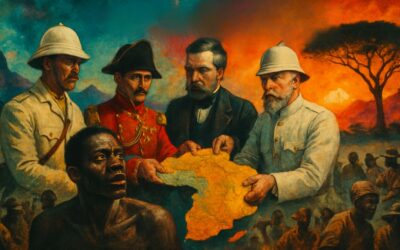
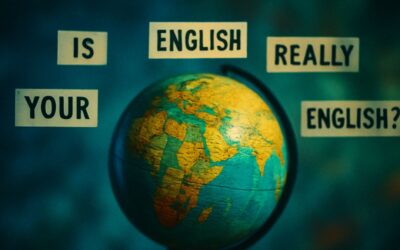
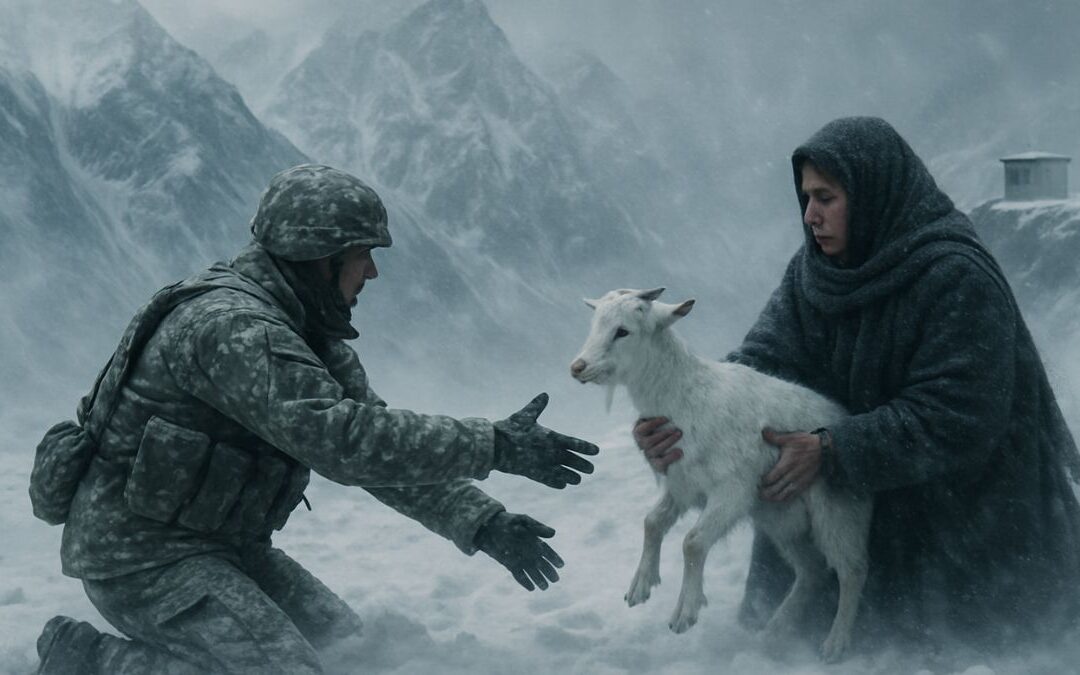
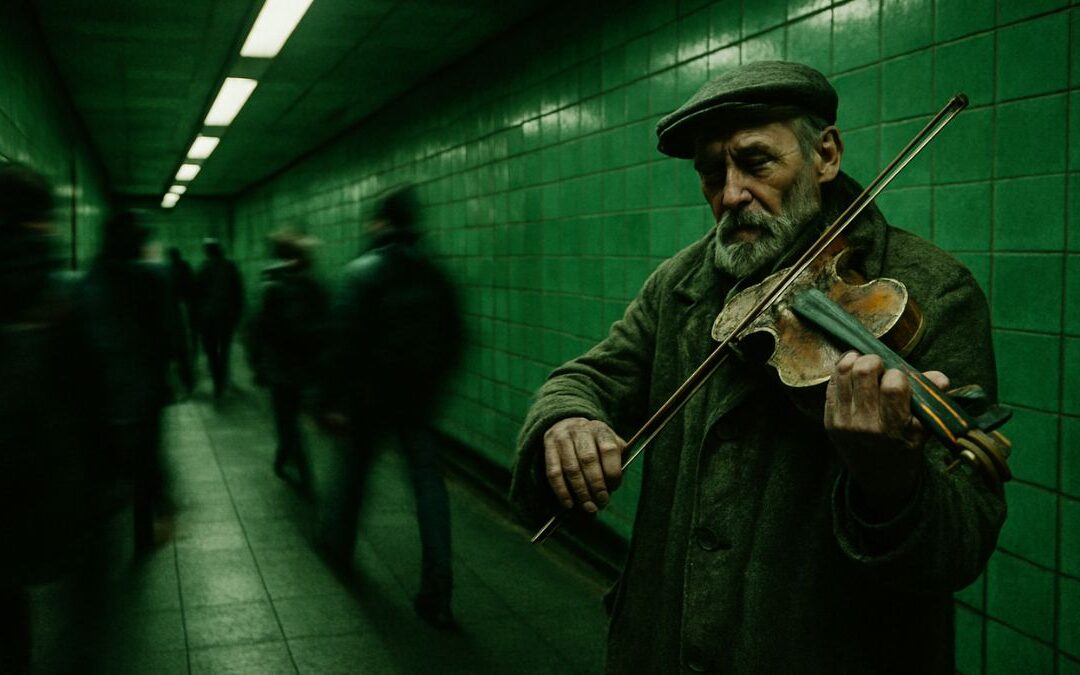

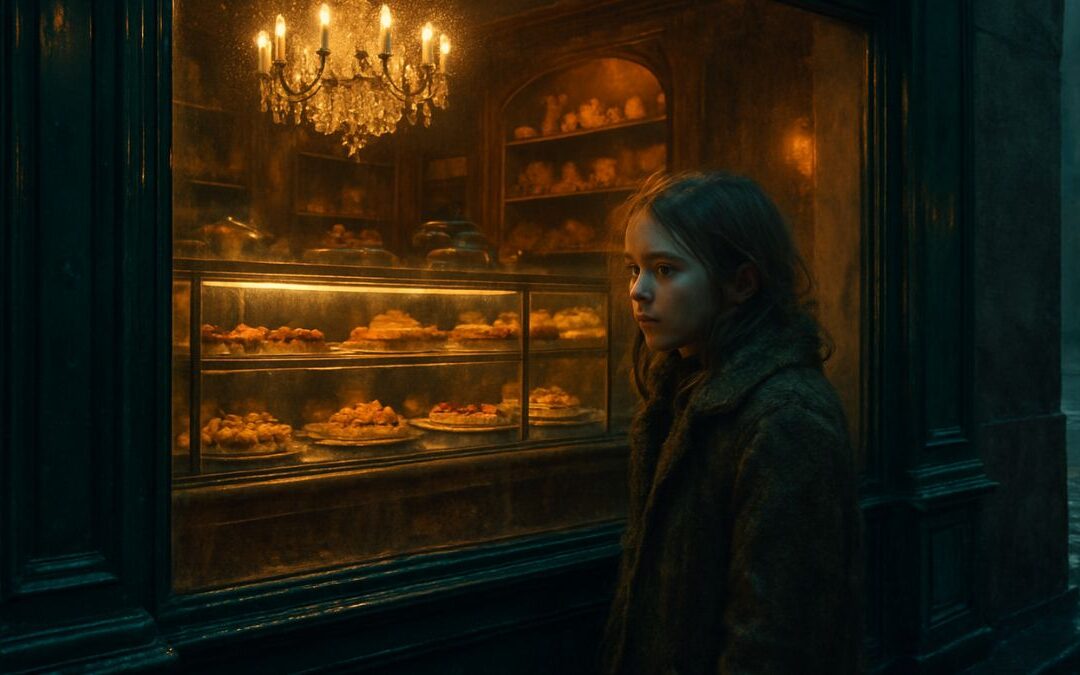
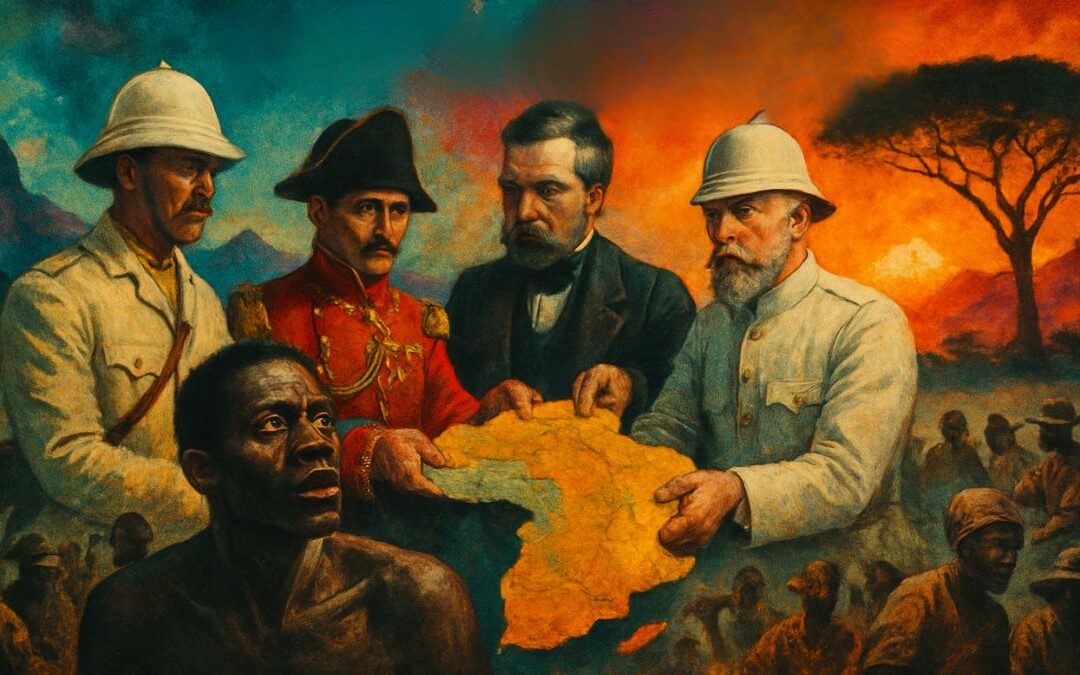
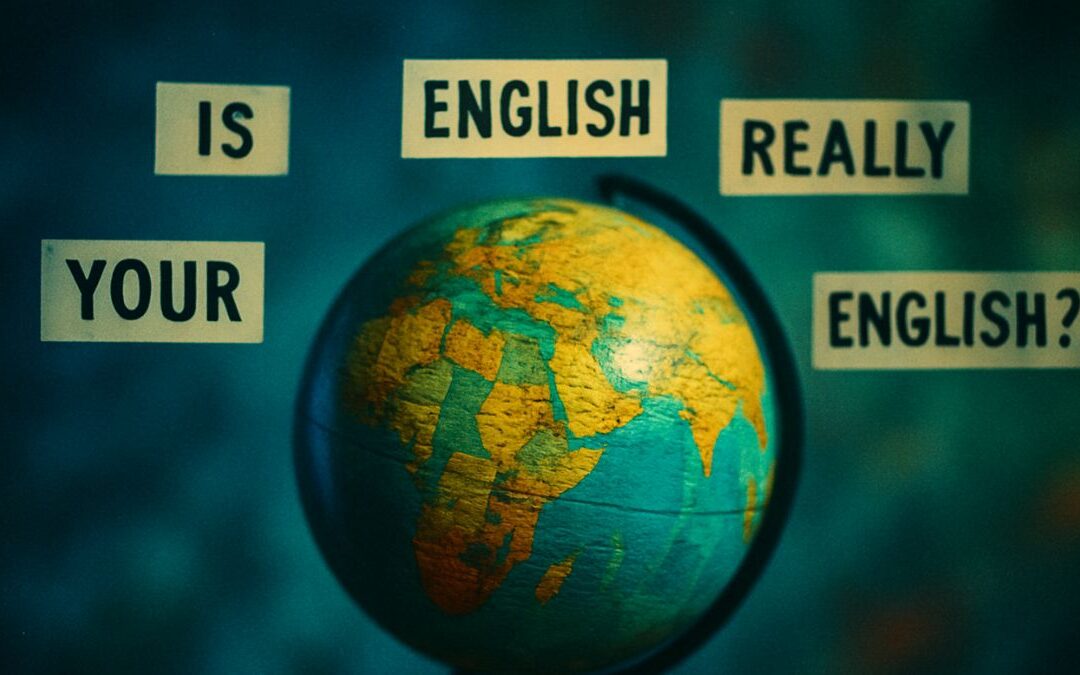
0 Comments